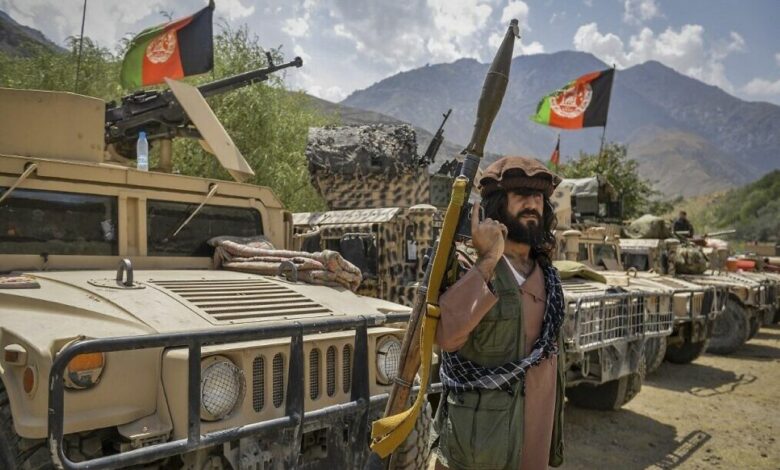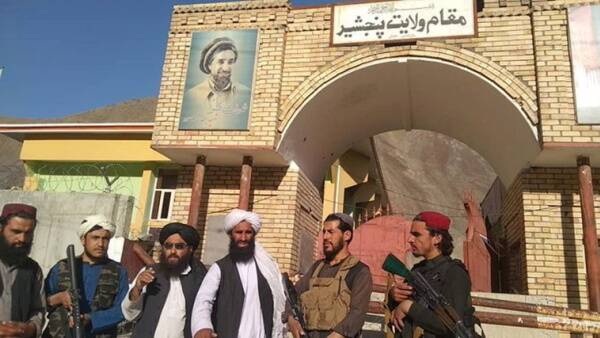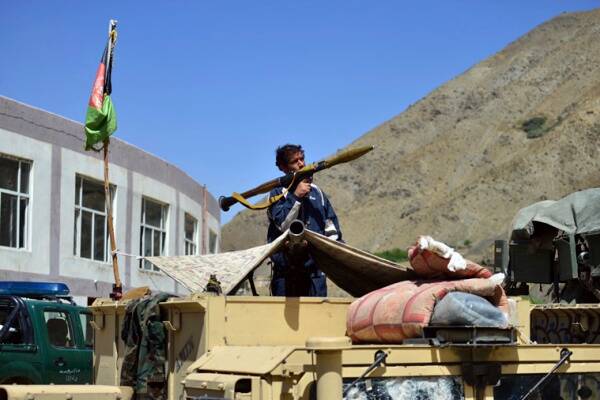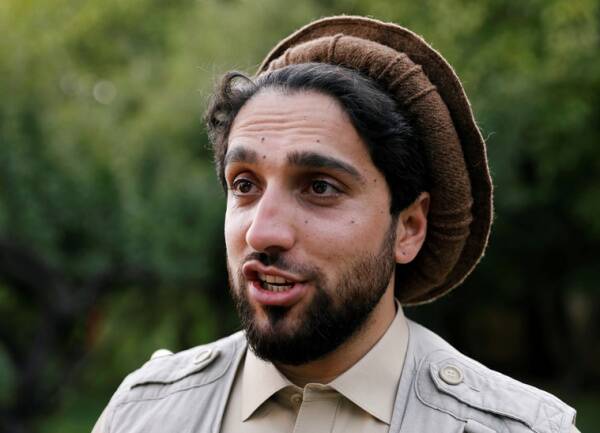Fall of Panjshir: Drowning of the last hope of the Afghans.

Last Monday, the Taliban claimed triumph over revolutionary forces in the Panjshir valley northeast of Kabul, claiming that it completed the Islamist group’s takeover of Afghanistan and vowing to announce a new government soon.
Pictures on various social media showed Taliban members standing in front of the Panjshir provincial governor’s gate after fighting over the weekend with the National Resistance Front of Afghanistan (NRFA), led by Panjshiri supremo Ahmad Massoud.

“Panjshir, which was the last retreat of the escapee enemy, is seized,” Taliban spokesman Zabihullah Mujahid announced in a news conference.
Last pocket of resistance
The radicals, who swept to power last month as the United States of America withdrew its forces after a long 20-year war, banned girls and women from schools and most work when they last commanded the country, from 1996 to 2001.
However, the group has now claimed that women would be allowed to work across critical sectors of society, in line with Islamic law. The Taliban has also guaranteed women’s rights.
The Taliban gained power of most of Afghanistan almost three weeks ago, taking control in Kabul on August 15 after the Western-backed administration fell and President Ashraf Ghani fled the country. Ghani was swift in leaving the country in the hands of these militants.
The valley, the last pocket of armed rebellion against the Taliban, has a record of being challenging for enemies to take.
The rough mountain valley is still scattered with the wreckage of tanks damaged during the long war against the then Soviet Union in the 1980s.
The struggle in the valley has been the most famous example of resistance to the Taliban. But some cities have also witnessed scanty, isolated demonstations for the women’s rights or in defense of the red, green, and black flag of the defeated Afghan republic.
US-led international forces relocated about 124,000 foreigners and at-risk Afghans in the weeks before the last U.S. troops left Kabul. Still, tens of thousands who fear Taliban revenge were left behind.
About 1,000 people, including Americans, have been stuck in northern Afghanistan for days expecting clearance for their charter flights to leave. An organizer informed Reuters, blaming the delay on the U.S. State Department.
The defeat of Panjshir
The fall of Panjshir, the last surviving holdout regulated by the Northern Alliance forces, means the end of the armed opposition to the new leaders of Afghanistan, at least for the time being.

There are mainly five takeaways from the victory that the Taliban claimed on Monday.
First, the new approach demonstrated by the Taliban was a success.
In comparison to the 1990s, when the Northern Alliance could regulate the supply lines connecting Tajikistan with the valley, this time, the Taliban captured the territories to the north of Panjshir. As a result, they enclosed the valley and effectively cut off supply lines of arms, ammunition, fighters, food, and fuel to the resistance. A force without the supply of arms and ammunition cannot survive for long.
Second, Pakistan supported the Taliban with arms, ammunition, and, several reports suggest, even fighter jets to defeat the opposition. Pakistan’s friendship with the Taliban has been a huge plus point for the militant forces to take over Afghanistan.
The mobilization of Pakistani air assets was a game-changer that produced a variability between the Northern Alliance forces and the Taliban and eventually swayed the balance in the former’s favor. The ISI chief’s presence in Kabul was a clear indication of the critical role that Rawalpindi played. Iran has criticized the Pakistani military for “foreign interference” in the internal affairs of Afghans.
Third, the U.S. and its allies wholly abandoned the Northern Alliance.
The time when Ahmad Shah Massoud, the legendary “Lion of Panjshir” and father of the young leader of the revolutionary Ahmad Massoud, was chief of the anti-Taliban forces, several among the international community had assisted the Northern Alliance with men and material. Ahmad Shah Massoud was slaughtered by al-Qaeda 20 years ago, just two days before the 9/11 attacks that jolted the world and triggered the US-led war on terror.
In August, in an opinion article in The Washington Post, the 32-year-old Ahmad had pleaded to the United States of America, France and Britain to support his uprising by sending in arms, though in vain, it would seem.
Four, It is clear that Ahmad is not yet in his father’s class, among the most prominent guerrilla fighters of the last century. The valley became the deathland of the Red Army, with Massoud in power and the Taliban who followed the Soviets could never seize the Panjshir valley either.
Ahmad, who was highly educated at the elite Royal Military College at Sandhurst in Britain and King’s College London, earned a degree in war studies before returning to Afghanistan in 2016, has taken shelter in Tajikistan as the Taliban entered into the valley.

Along with Ahmad, the responsibility of the resistance has been passed to a long-time aide of the senior Massoud, Amrullah Saleh, an uncompromising opponent of the Taliban and their mentor, Pakistan. Saleh, who declared himself acting president of Afghanistan after Ashraf Ghani escaped the country, is a retired spy chief who has deep links with the CIA and nearly each and every intelligence agency in the region and the world. Many consider Saleh to be the last man standing against the Taliban, who has made a strategical retreat to fight another day.
Five, to the degree that the fall of the valley marks the success of the Taliban and the Pakistan military, it is a setback for India as well.
New Delhi, which had previously backed the Northern Alliance through funds and material, as has been documented in Steve Coll’s book, Directorate S., seems to have taken a hint from the Americans and stepped back this time.
In one of his last conferences to a T.V. station on August 13, 2001, the senior Massoud was asked whether India had assisted his government in any way. He had replied: “We have good relations. We thank India for the aid, which is extended from time to time in the fields of humanitarian assistance for Afghan migrants. We have good political relations and we consider it to be a positive step.”
Massoud was also asked whether India and his government shared common interests and what India could do to help bring peace to Afghanistan.
“The main commonality is that both nations want peace and stability in the region and do not want tension. India is a big country in the region and can be effective through different ways to restore peace in Afghanistan,” Massoud had replied.
With the fall of Panjshir, the last hope for many Afghans had drowned; it seems like a nightmare that’s coming true. And there’s no way out of this inevitable event that’s knocking at the door of the Afghans.




